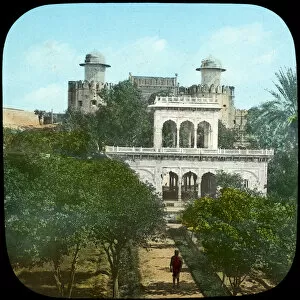Ranjit Singh Collection
Ranjit Singh, also known as the Lion of Punjab, was a powerful and influential figure in Indian history
For sale as Licensed Images
Choose your image, Select your licence and Download the media
Ranjit Singh, also known as the Lion of Punjab, was a powerful and influential figure in Indian history. His legacy is captured in various historical artifacts and artworks. One such depiction is a mesmerizing image seated on his golden throne. The opulent painting showcases his regal stature and authority, with intricate details painted using opaque watercolors and gold accents on paper. It transports us back to the 19th century when he ruled over Lahore, India. Another captivating portrayal shows Ranjit Singh seated on a gold chair, attended by a morchal-bearer. This artwork highlights his grandeur and the respect he commanded from those around him. The artist masterfully captures every detail, from the ornate chair to the elaborate attire worn by both Ranjit Singh and his attendant. The Fort Gardens in Lahore housed a marble pavilion that served as an emblem of beauty during that era. In late 19th or early 20th century photographs, we can see this serene location where Ranjit Singh's influence extended even beyond political power. His final resting place at the Tomb of Runjeet Sing is another significant landmark associated with him. Captured in c1891 by James Grant, this photograph immortalizes the majestic tomb surrounded by intricate architecture that reflects his enduring impact on Indian history. Runjeet Singh's military prowess is showcased through engravings depicting scenes like "Runjeet Singh and his suwarree encamped under the banian tree on River Sulley. " These illustrations transport us to moments when he led cavalry units fearlessly across vast landscapes. Additionally, there are depictions of important structures built during his reign like "Fort Philoor" constructed along Sutlej River between 1858-61. These fortifications symbolize not only strength but also strategic brilliance employed by Ranjit Singh to protect his kingdom.


















